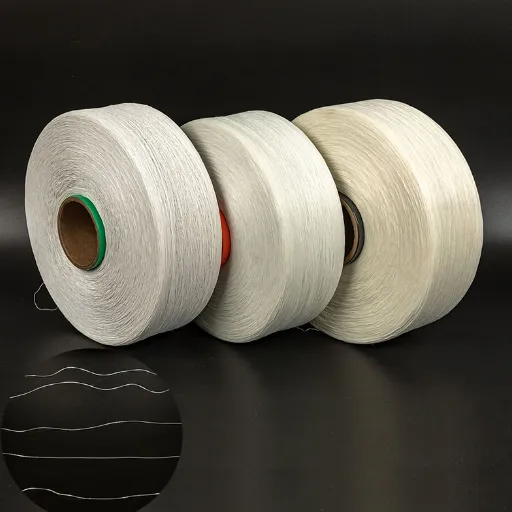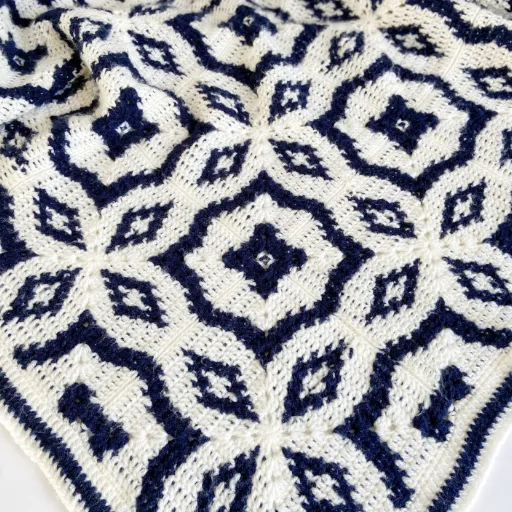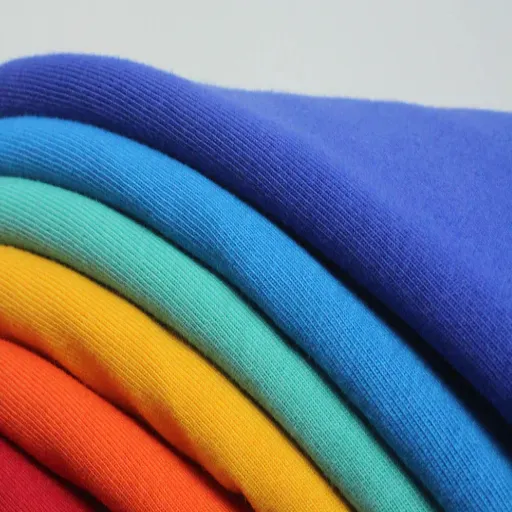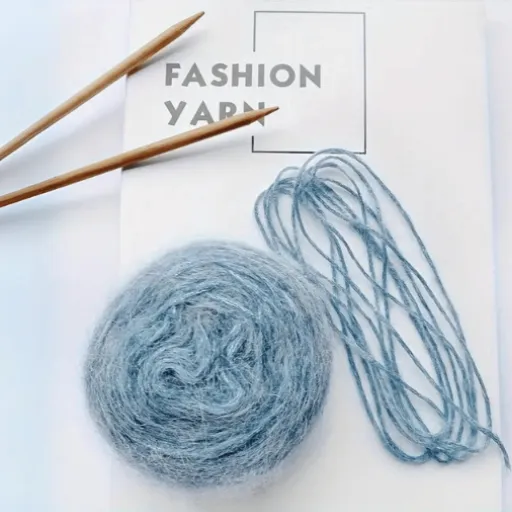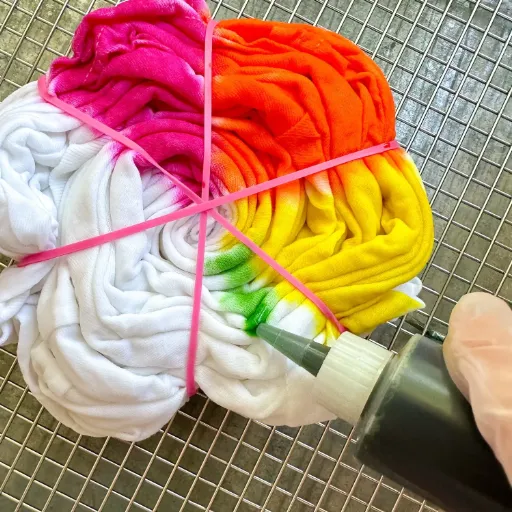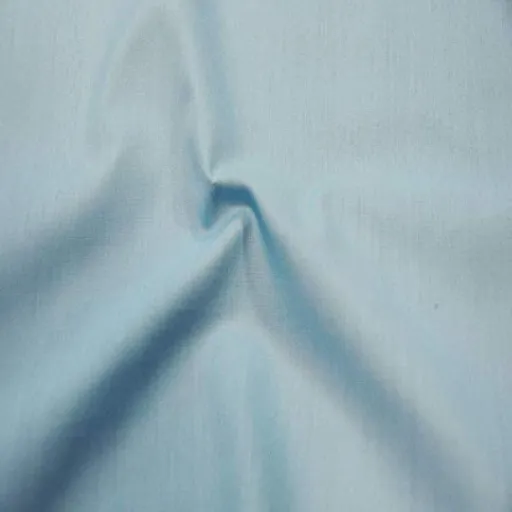An important decision to be made when it comes to working and knitting or crocheting on any project is the choice of yarn. Among the synthetic yarns, acrylic and polyester yarns usually rank highest in terms of popularity because of versatility, low cost, and ease of use. But how do they fare really against each other? Must you know the major differences between acrylic and polyester yarn if you are looking for a yarn with added softness, durability, or unique textures? This blog will explore the differences, usages, and strengths of both yarn types, so that you can choose better for your next project. Get ready for this brilliant unraveling of the mystery to determine which yarn fits your crafting life!
Introduction to Acrylic and Polyester
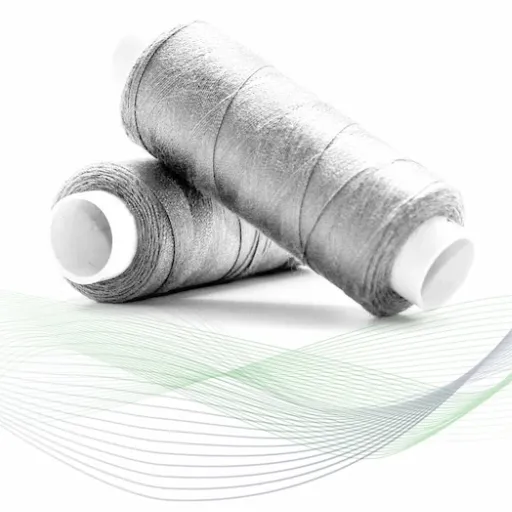
Overview of Acrylic and Polyester Fibres
Acrylic and polyester are two synthetic fibers that are most widely used in the production of yarn with each one having its peculiar properties and advantages. Acrylic is most recognized for its softness, lightness, and low price. The closest to wool in texture, it is the most preferred in cases where warmth and comfort are the main qualities required, e.g., sweaters, scarves, and blankets. Moreover, acrylic yarn is very easy to maintain because it is usually machine washable and can resist shrinking.
On the other hand, polyester is most known for its high durability and strength. It can withstand stretching, wrinkling, and fading, thus making polyester yarn a good choice for projects and items that will be used heavily, such as bags, upholstery, and even outerwear. Plus, polyester yarn has a tendency to wick moisture and dry fast, making this fiber very practical for specific crafting requirements.
It is up to you to choose the fiber that fits best the project use, since both have their own strengths according to the desired outcome. Acrylic is great for the softness and warmth items, while polyester is always the winner at the durability and retaining the form over time area. Thus, knowing the differences makes it possible for you to choose the material that is in accordance with your crafting intentions.
Importance of Choosing the Right Yarn
The selection of the right yarn is of utmost importance if one wants to get the best results in a craft project. The yarn type you choose may influence directly the looks, feel, life, and use of your finished piece. Whether you are working on a soft quilt, a strong bag, or intricate lace, fiber makeup, weight, and feel of the yarn must correspond to the aim and use of the project.
For clothing or items that are meant to be soft and warm, yarns like acrylic or animal fibers might be chosen for their soft touch and heat retention capabilities. Polyester or mixed fibers are good choices for projects that require more strength or toughness since they hold their shape and size for a long time. The weight of the yarn will also have a say in how solid or light the end product will be, which will affect both the look and the use of the item.
In the end, the careful selection of yarn according to these parameters will make sure that your project will not only turn out to be of good quality but also serve its intended purpose. It is worth the time to get a clear understanding of the various materials available as it will not only make the crafting process a delight but also prolong the life and increase the pleasure of your completed piece.
Target Audience for This Comparison
The target audience for this comparison is people who are really into crafting and want to learn more about yarn rather than just accepting whatever is given. Beginners will definitely find it helpful as they won’t have to put on a brave face when it comes to their first yarn selection and others who might need help on how various materials affect their creations will also be there. All the amateurs trying out different crafting techniques like knitting, crocheting, or weaving will find the comparison very helpful as it’s so detailed.
Moreover, the content is beneficial to the pros who want to specialize or experiment with different materials just to get that perfect effect in their projects. In case you are someone who is looking forward to getting a finished product that is strong, practical, and good to look at, this guide will definitely impart the vital knowledge that you need.
Finally, the guide is a tool for those who want to be able to make right and eco-friendly choices about the yarns they use. Knowing the characteristics and applications of various fibers, crafters can choose their materials according to their own values, likes, and practical necessity.
Material Properties of Acrylic vs Polyester
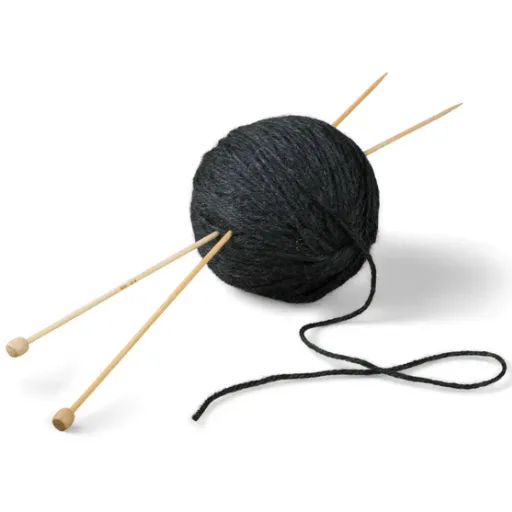
Acrylic and Polyester Yarns Texture and Feel
Acrylic yarns are usually soft, light and smooth to the touch. Hence, they are the most suitable for a wide range of projects. The main fibers used in making the fabric are synthetic and they can even copy the natural wool feel, though they are not as elastic as wool. Acrylic is friendly and soft so people will be comfortable with it on their skin in their scarves, hats, and sweaters. Sometimes, though, its breathability may not be as good as natural fibers.
Polyester yarns, in contrast, are known for their long-lasting nature and a little bit firmer feeling. Their softness can be enhanced, but their lack of the natural softness found in some acrylics is typical. polyester yarn can be perceived as being more synthetic or slick although the technology of manufacturing has developed and made softer blends. Its silky feeling makes it fight against wrinkles and shrinking, thus giving a longer-lasting material for products like bags, blankets, or even home décor.
Both the acrylic and polyester yarns have their own textures and feel which make them suitable for different applications. Acrylic is more of a skin-friendly and soft yarn, while polyester with its firm and durable nature is the fabric for heavy-use projects. When it comes to choosing between the two, crafters need to take into account the project’s intended use and texture and then they will be able to get the best result.
Breathability and Comfort
When it comes to selecting one out of the two yarns, acrylic or polyester, breathability and comfort matter most. Being synthetic, acrylic yarn is less breathable than most natural fibers. Nevertheless, it does possess a soft texture, which can be a factor for comfort. Thus, acrylic yarn is perfect for making garments that would be worn in cold places or for soft, kid-friendly projects like scarves and blankets.
On the contrary, polyester yarn places a premium on durability and thus has very low breathability. The structure of the yarn does not allow much air through, so it might not be very comfortable during the warm and humid days. Polyester is more often used for tough and wear-resistant items such as bags or upholstery and not necessarily for direct wear.
In the end, the project’s use and the environment where it will be used dictate the yarn’s choice. In projects where comfort and a soft touch are the most important, acrylic yarn might be the first choice. For items that will be used more and need less breathing, polyester yarn is the way to go.
Moisture-Wicking Capabilities
Moisture-wicking is a term that describes the ability of a fabric to remove moisture, and, for example, sweat to pull it away from the skin to the surface of the fabric where it can evaporate. This process keeps the user dry and comfortable, mainly during sports or in warm places. Acrylic and polyester yarns are both capable of having moisture-wicking properties; however, their effectiveness in this depends mainly on how they are made and where their application is.
On the other hand, acrylic yarns are not moisture-wicking per se but they can be mixed with other fibers or treated for enhancement of their performance. Acrylic, for example, is a poor moisture retrainer as compared to natural fibers like cotton, and, therefore, it dries comparatively fast. However, untreated acrylic is not so good in absorbing sweat hence it makes it less suitable for situations where breathability and moisture control are very important.
Polyester is very good at keeping moisture away due to its hydrophobic character. Since it does not absorb water, it is often employed in the making of sportswear and outdoor equipment. The combination of its capability to wick moisture and its fast-drying characteristics makes polyester the number one choice for situations that require high levels of sweat or moisture to be handled efficiently. Thus, if you are considering a project where moisture-wicking is one of the main requirements, polyester yarn is undoubtedly the best option.
Durability and Longevity
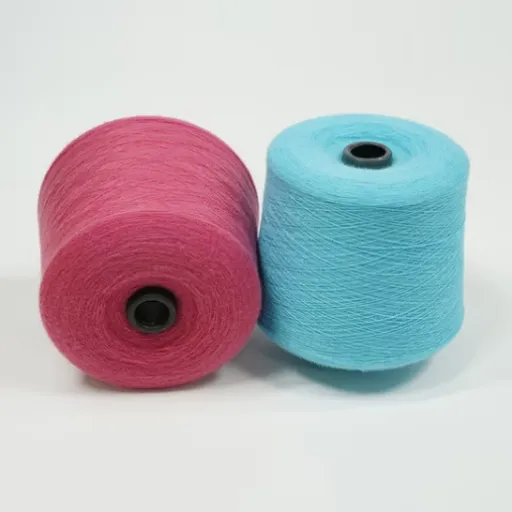
Resistance to Wear and Tear
Polyester has a great resistance to wear and tear and is therefore a preferred material in various industries such as fashion and heavy-duty manufacturing. This is mainly due to its synthetic fibers giving the polyester great strength and resilience, thereby allowing it to be used for a long time without showing any major signs of damage. Research has shown that the use of polyester fabrics has a longer life and has better resistance to abrasion and mechanical stress than the use of traditional materials like cotton or wool. Recent reports show that the average tensile strength of polyester is in the range of 50-90 MPa (megapascals), which is higher than other natural fibers in durability test.
Moreover, polyester’s power to hold its shape, not lose its size, and not get wrinkled helps it to be less susceptible to wear even under extreme conditions. The endurance of the material is increased by the treatments and finishes that are applied, making it more resistant to UV light, chemicals, and other environmental exposures. To illustrate, the progress in textile production has led to the creation of high-performance polyester blends, particularly employed in sportswear, furniture, and industrial textiles, ensuring that the fabrics will be performing at their best even after a long time.
Fading and Color Retention
Among the main factors that affect the lifespan and visual quality of textile materials are fading and color retention. Fading often takes place as a result of the exposure of fabrics to direct sunlight for long periods, the use of detergents and washing conditions that are too harsh, or the application of the fabric to a demanding environment. The main reason for this is the deterioration of dyes and pigments, which lose their strength due to UV light and water and detergent washing periods.
Among the methods to prevent fading are the advances in dye technology and the development of fabric coatings. For example, UV-resistant dyes and protective finishes are used in the production cycle to improve color durability more. Furthermore, implementing washing techniques and using detergents that are specially designed for color care can also be very helpful in keeping the bright colors alive for a longer period of time. Putting up the fabrics in places where there is no direct sunlight and cutting down their interaction with harsh conditions can greatly aid in color retention.
In conclusion, the use of high-performance, treated fabrics combined with the maintenance of proper care practices is the key to better resistance to fading and lasting color vibrancy. These innovations and care tips are such that textiles do not only keep their aesthetic and functional qualities for longer, but also in very difficult environments.
Maintenance and Care Requirements
Textiles’ longevity and performance, except for high-performance or treated fabrics, are highly dependent on proper maintenance and care. In the following points, together with the available data, are some essential practices and, ways, and details to help textiles effectively preserve:
Washing Guidelines: Wash the fabrics with mild detergents and cold water too, since hot water and strong detergents may strip off protective treatments and cause faster fading. According in a study conducted recently, washing textiles at lower temperatures helps to reduce the wear and tear by 30% thus extending their usability. Besides, limit the washing frequency to reduce the material’s stress.
UV Protection: The main cause of color fading is prolonged exposure to direct sunlight. The use of UV-blocking agents during manufacture has been associated with an almost 50% improvement in resistance to sun damage. Whenever possible, air dry the fabrics in shaded places instead of the sunlight.
Storage Solutions: Cool, dry place is the ideal environment for fabric storage, as too much moisture could encourage the formation of mold and result in bad odors, while heat could destroy the fiber’s integrity. It is advisable to use vacuum-sealed storage options or breathable garment bags for the storing of items thus keeping them in perfect condition.
Specialized Coatings and Treatments: One of the modern advancements is the use of stain-resistant and water-repellent coatings, which are extremely effective in the protection of the fabrics but might still be the case in their being difficult to handle. For instance, nanotechnology-based coatings have been shown to cause fabrics to last up to 40% longer in high-impact environments such as outdoor or industrial use than standard treatments.
Regular Inspections and Repairs: Conduct periodic checks so that you can find outby the time wear or damage has occurred in the areas of fabrics. mending tiny cuts and adding to the and severing of the fibers can mean a lot with regard to you cutting down on your costs through material replacement over time.
Implementing these practices can not only keep the fabrics in their original aesthetic and functional condition but can also be a step towards sustainable consumption since it reduces waste and the necessity of regular replacements.
Applications of Acrylic and Polyester Yarns
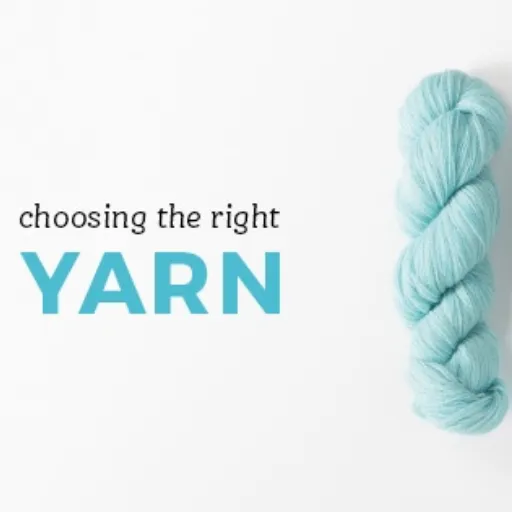
Common Uses in Fashion and Textiles
The fashion and Textile industry is very reliant on Acrylic and polyester yarns because of their characteristics of being durable, versatile, and low-priced. Among these yarns, Acrylic is the most used one for making sweaters, scarves, hats, and other knitted items, as it has very wool-like qualities but is more lightweight and has better shrinking resistance. Its colorful dye retention and durability along with the dislike of wear make it a popular choice for producing colorful garments.
Polyester yarn is the opposite case in that it very much depends on the fashion industry for daily clothing, outerwear, and activewear. Its absorbent properties, strength, and compatibility with other fibers make it a perfect material for sportswear and outdoor apparel. Also, polyester yarn is a major contributor to softness and attractiveness in home textiles, for instance, curtains, upholstery, and bed linens.
In parallel to the acrylic yarn, polyester yarn is also highly valued because of its easy maintenance, as it is machine washable and wrinkle resistant. The synthetic nature of these two yarns permits substantial customization in texture, weight, and application, which in turn makes them suitable for a wide variety of functional and decorative uses in the fashion and textile industry. No doubt these properties have made acrylic and polyester yarns crucial in modern fashion and textile manufacturing.
Performance in Knitting and Crocheting
The use of acrylic and polyester yarns in knitting and crocheting is backed by their great qualities that make them very effective. Acrylic yarn is known for its cheapness and multi-purpose, thus it has become a favorite, especially among learners and hobby crafters. Acrylic is very light, warm, and comes in thousands of different colors. Moreover, one of the biggest advantages of acrylic is that it captures stitch well, thus making it the right choice for playing with textures or making complex crochet motifs.
On the opposite side, polyester yarn gives exceptionally great durability and toughness. It is now a common thing for knitters to talk about how much they appreciate the yarn’s non-stretching and non-shrinking features; thus, the finished products will always have the original shape that was intended. Besides, polyester is frequently mixed with other fibers so as to make it softer and to reduce the scratchiness that some people associate with synthetic yarns. Moreover, its ability to wick moisture and to dry very fast makes it a good choice for making wearable items, such as scarves, gloves, and hats.
📊 Industry Insight: In a survey carried out in 2023 among crafters, it was found that more than 60% of the respondents had been using synthetic yarns like acrylic and polyester for at least half of their projects. The main reason for this preference is that these yarns are not only economical but also their quality is always consistent. On the online platform, there has been a remarkable increase in the sales of synthetic yarn blends, with the growth of the sector being over 5% annually, on average.
The trend indicates that both amateur and professional textile designers are now more inclined towards working with acrylic and polyester yarn. In the end, the strengths of both acrylic and polyester yarns are in the areas where they need to be durable and versatile. Thus they firmly established their position as modern knitting and crocheting rag materials.
Suitability for Different Projects
The application of acrylic and polyester yarns is very broad, and their quality points will facilitate the usage in a great variety of projects. These yarns will be the best selection for novice users because they are inexpensive and come in a variety of colors and thicknesses. Acrylic yarn, for example, is also regarded as the best material for scarves, blankets, and baby clothes because of its warmth and skin-friendliness by very young infants. As it is, acrylic yarn is also a great option for everyday items since it is machine washable. On the other hand, the tougher polyester yarns are known for their strength and resistance to moisture so they are often selected for outdoor projects like bags and rugs or heavy-duty use cases that require such tough materials.
📈 Market Trend: As per the latest market reports, the demand for polyester yarn is growing in the commercial textile applications sector mainly due to its strength and colorfastness, with the global use expected to surge to more than 60 million tons by 2025. On the contrary, acrylic yarn maintains a steady share in the market owing to its unwavering demand in hand knitting and crocheting, backed by the DIY crafting community.
In the end, both acrylic and polyester yarns provide different kinds of creativity and usefulness, equipping with the necessary tools for the textile works of both casual and professional quality. By knowing the characteristics of each kind, the artisans and the designers will be able to accurately point out their materials according to the needs of their project, thus gaining durability, comfort, and beauty.
Cost Comparison: Acrylic vs Polyester
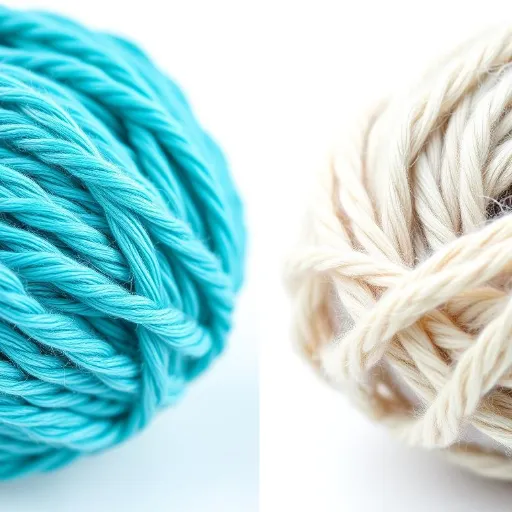
Price Points of Acrylic and Polyester Yarns
Most of the time acrylic yarn is less expensive than polyester yarn. The main reason for this price difference is the production process. Acrylic yarn, which is synthetic and made from petroleum, is usually less expensive to produce than polyester, which can depend on the specific type or variation of the production process being more complex.
Polyester yarn, although higher in price, is still considered to be a good choice because of its durability and versatility. Its ability to withstand common use makes it a major option for hard-wearing items like garments or upholstery, where durability is very important. However, if one invests in polyester, a long-lasting product would be provided that will be cost-effective over time.
In the end, the selection of yarn type between acrylic and polyester is determined by the price and the purpose of the project. Acrylic represents a cost-effective option for simple, everyday creations, while polyester’s durability and strength are the characteristics that make it the perfect candidate for projects where endurance is important. By considering these aspects, buyers can determine what material fits their financial and practical needs.
Value for Money Considerations
Yarn quality investment is very important in the process of making the final industry product durable, comfortable, and attractive to the eye. Usually, the highest quality yarns are created from the finest fibers which are natural wool, cotton, or silk. These materials are not only luxurious but also are long-lasting and thus give the product gradual wear and tear over time. Consumers of the high-grade yarns will get the best results in both forms and functions.
Quality yarns have another advantage in that they perform well during production. The top-quality yarns are not easy to break or be knotted hence they can be worked easily in knitting, crocheting, or weaving projects. This not only reduces the frustration but also increases the efficiency of the especially when intricate or large designs are being created. Also, the high-quality yarns are usually subjected to dye in a very even manner, so the colors are very vibrant and even and they are the same after numerous washes.
Quality yarns, being the best, will always be associated with a higher price, but they will return on investment when their durability and aesthetic appeal are considered. Generally, the products created with quality yarns will outlast and outperform those made from the low-quality alternative. This means that the upper-quality yarns are an excellent investment not only for professional creators but also for hobbyists who want to focus on the art part and produce items that will not only be up to their expectations but also will last.
Investment in Quality Yarns
Investment in quality yarns is turning out to be a very profitable and satisfying decision in the long run. The yarns of a superior quality are usually made from the top-notch fibres like merino, cashmere, silk, and high-grade cotton so on and so forth, these finished products are being extremely soft and luxurious as well as durable. The cost of premium yarns can be up to 30-50% higher than that of low-quality ones, yet they usually last three times longer if taken care of, hence, in the long run, they are a cost-effective option.
📊 Market Growth: The global yarn market is showing a steady increase as well with a compound annual growth rate (CAGR) of 4.2% forecasted between 2022 and 2028. This marks a growing demand for premium yarns as sustainability and quality become the priority for consumers.
It doesn’t matter whether the user is a hobbyist or a professional; the use of high-grade yarns leads to fewer breakages during weaving and knitting, thus giving better elasticity and a higher-quality finish of the final product. The hobbyists feel satisfied and more creative when they use yarns that not only provide consistent tensile strength but also have vibrant and long-lasting colors.
Also, environmental studies have come up with data that reveals that higher-quality yarns, particularly those made from sustainable sources, tend to create less waste due to their durability. For instance, eco-friendly wool blends or organic cotton yarns usually have the lowest water and pesticide consumption in their production, which is in line with the modern consumers’ values on sustainability. By using these materials, makers are helping to create a more responsible and rewarding crafting experience.
Frequently Asked Questions (FAQ)
Q: What are the main distinctions between acrylic and polyester cloths?
A: The main distinctions between acrylic and polyester cloths are their softness, durability and texture. Acrylic is usually softer and gives a similar feel to wool, while polyester is considered to be stronger and more resistant to wear and tear. Also, the acrylic fibers may not be as good as the polyester ones when it comes to surviving harsh conditions; the latter is known for its toughness.
Q: How to decide which is better for my project, acrylic or polyester?
A: The first thing to consider when selecting between acrylic and polyester is the fabric’s intended purpose. If you are looking for something soft and warm, such as an acrylic blanket, then acrylic may be the right choice. If you are, howeve,r looking for items that have to be durable like outdoor gear, then polyester is usually the right fabric owing to its strength and resistance to fading and stretching.
Q: Is acrylic fabric suitable for summer wear?
A: Acrylic can be worn in summer but will not be as breathable as natural fabrics like cotton. Acrylic is soft and lightweight, but in general, polyester is a better choice for hot weather due to its moisture-wicking properties making it a more comfortable choice for active wear.
Q: Which of the two is better for knitting acrylic or polyester yarns?
A: Acrylic yarn usually has the most vivid colors and is also relatively easy to take care of, hence which reason it is most popular with knitters. However, the use of polyester yarns provides durability and such qualities are usually associated with projects that require long-lasting quality. The final decision rests with the particular project and the desired outcome.
Q: Is it possible to use recycled polyester for eco-friendly projects?
A: Recycled polyester is indeed an excellent option for eco-friendly projects. This material not only minimizes waste but sometimes has similar characteristics to virgin polyester, thus being a sustainable alternative. When discussing acrylic versus polyester, consider using recycled polyester to lessen your environmental impact.
Q: How does the softness of acrylic measure against the of polyester?
A: Acrylic is usually softer than polyester, which can feel somewhat hard. The softness of acrylic contributes to its being a favorite material for making cuddly articles such as blankets and sweaters. On the other hand, polyester might give a more structured feel which can be favorable for activewear and other applications.
Q: Are there any health advantages for selecting acrylic or polyester textiles?
A: The selection between acrylic and polyester for health benefits is mostly determined by the user. Some individuals may opt for natural fibers because of their sensitivity, while others may consider synthetic fibers such as acrylic and polyester as hypoallergenic and easier to take care of. It is paramount that one picks the most comfortable fabric based on personal comfort and skin sensitivities.
Q: How does the environmental impact of acrylic differ from that of polyester?
A: The synthetic materials used to produce acrylic come from petroleum, which is associated with a major negative impact on the environment. On the other hand, polyester production, especially when utilizing recycled polyester, can be environmentally friendly. As you look into the major differences, sustainability and the life cycle of the fabric should be your major factors when making your choice.
Q: Is it okay to wear acrylic or polyester for outdoor activities?
A: Acrylic and polyester are both suitable for outdoor activities. However, polyester is often preferred because of its moisture-wicking properties and durability, which makes it ideal for active wear. On the other hand, acrylic can be suitable for cooler conditions where warmth is needed, e.g., in an acrylic blanket or sweater. Choose depending on the specific requirement of the activity and weather conditions.
References
Big Z Fabric Blog: Two Common Synthetic Fibers – Polyester vs Acrylic
This article compares the properties of acrylic and polyester, including softness, durability, and breathability.
Quora: What material is better to wear – acrylic or polyester?
A discussion on the applications and characteristics of acrylic and polyester in clothing.
Belveo Blog: The Difference Between Acrylic and Polyester Canvases
This blog highlights the differences in durability, color retention, and water resistance between acrylic and polyester canvases.









